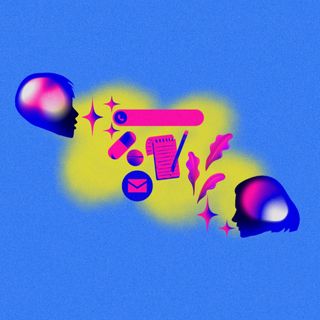
The Difference Between Binge‑Drinking and Alcoholism, Explained
Unlike binge drinking, alcoholism signals an unhealthy dependence on alcohol. It’s also chronic, and not merely episodic.

“How many drinks are too many drinks?” This is a classic question many drinkers have encountered in their heads — either while nursing a hangover the morning after, throwing up in the washroom after a wild night, or simply, while considering whether to pour themselves yet another glass as they stagger their way to the counter. But drinking occasionally — even if it’s a lot more than one’s body can deal with — doesn’t automatically classify them as an alcoholic. Depending on the quantity of alcohol consumed, it might qualify as binge drinking, though.
According to the National Institute on Alcohol Abuse and Alcoholism in the U.S., a pattern of consuming a large amount of alcohol in a short period — such that it brings one’s blood alcohol concentration to 0.08% or higher — qualifies as binge drinking. For a male body, binge drinking would typically mean consuming five drinks, or more, in a span of two hours; for female bodies, the number goes down to four drinks, or more. The CDC has dubbed binge drinking as “the most common and costly pattern of excessive alcohol use,” while clarifying that it doesn’t necessarily signal dependence on alcohol.
The pro-drinking culture we’re caught in often serves as the bedrock for binge drinking. This culture of boozing has us convinced that it’s the best way to fit in, have fun, form honest, no-holds-barred friendships, and take the edge off the trials and tribulations of life. This can manifest as peer pressure, encouraging people to drink till they pass out — not doing so can earn them monickers like “Sober Sally,” and “Party Pooper.” Because alcohol also has the added benefit of being a socially acceptable means of lowering inhibitions and relieving stress, people might reach for more liquor than they can handle, if they’re feeling overwhelmed or stressed. For many, it’s also a way to cope with social anxiety.
“Somebody can consume a lot of alcohol and have no indications of an addiction,” Norman Hoffman, a clinical psychologist and expert in the clinical assessment of mental health and substance use disorders, explains.
Related on The Swaddle:
The Rise of the ‘Sober‑Curious Movement,’ Explained
Binge drinking may not signal an addiction. But that doesn’t mean that it isn’t harmful; it is associated with a higher risk of alcohol use disorder — colloquially, called alcoholism — with some health organizations even calling it “the beginning of a problem.” As Hoffman explains, “Copious consumption of alcohol is definitely not a zero-risk behavior… if you’re someone who struggles with depression or anxiety and alcohol chills you out, resorting to drinking actually tends to make things worse.” Indeed, pre-existing mental health disorders like depression, anxiety, and bipolar disorder, among others, can increase one’s risk of developing an alcohol use disorder. Further, overindulging in anything — be it in food, shopping, or drinking — can feel amazing because it causes our brains to release staggering quantities of dopamine, the feel-good neurotransmitter, causing people to crave the same rush and get caught in the binge web.
Alcoholism, unlike binge drinking, can’t be determined by parameters hinging on any particular number of drinks. Instead, it is characterized by an increased tolerance to alcohol, and an inability to control one’s intake or put a hard stop, even when one can feel the negative consequences of drinking on their physical and mental wellbeing. Also, unlike binge drinking, alcoholism does signal an unhealthy dependence on alcohol and is considered a chronic condition — making it a disorder recognized by the Diagnostic and Statistical Manual.
The DSM-5, or the fifth edition of the manual, lists a number of symptoms — including disruption of one’s day-to-day life, inability to pursue one’s hobbies and interests due to their reliance on alcohol, the experience of withdrawal symptoms if they do attempt to quit, craving alcohol, and spending significant chunks of time in their endeavors to obtain it — that could point to an alcohol use disorder.
Alcoholism can present with different degrees of severity. Meeting up to three symptoms indicates a mild disorder, up to five is a sign that there is a moderate disorder, and more than six symptoms signal a severe disorder. In the long term, it can result in cancers, and both liver and cardiovascular diseases.
Related on The Swaddle:
How Childhood Experiences Can Influence People’s Drinking Habits
Even binge drinking alone can adversely impact people’s lives, in more ways than one — even if we set aside the risk of it culminating in alcoholism. Besides subjecting one to the risk of alcohol poisoning, binge drinking increases the chances of people blacking out, injuring themselves, or feeling physically ill. Binge drinking can impact one emotionally, too: making them feel depressed and anxious, and prompting them to behave in ways they wouldn’t if they were sober, exposing them to a spiral of shame and regret after. Further, consistently engaging in binge drinking patterns can also impact one’s relationships, and infuse otherwise avoidable conflicts — both social and legal — in their life, planting the seeds for subsequent woes.
By impairing one’s cognition, binge drinking can also open them to the risk of unintended pregnancies and STIs — often, as a result of not taking adequate precautions before indulging in their passion. Needless to say, both can entail long-term consequences. For some, however, binge drinking can result in temporary sexual dysfunction; if they don’t link to the excessive consumption of alcohol, it can impact their confidence in their sexuality.
In other words, while alcoholism is chronic and binge drinking is more episodic in that it’s separated by periods of abstinence, both are problematic drinking behaviors — even though their impact on a person’s life may vary wildly. The impact, in both cases, is bad. And so, if one is struggling with either, or beginning to notice themselves relying on alcohol more and more, it merits a conversation with a professional.
Even if it turns out their drinking behavior was fine, and they were simply too worried, it’s never a bad idea to be sure. As they say, better safe than sorry.
Devrupa Rakshit is an Associate Editor at The Swaddle. She is a lawyer by education, a poet by accident, a painter by shaukh, and autistic by birth. You can find her on Instagram @devruparakshit.
Related


Indian Mental Health Professionals Continue To Be Ignorant About Neurodivergence. How Are People Coping?
